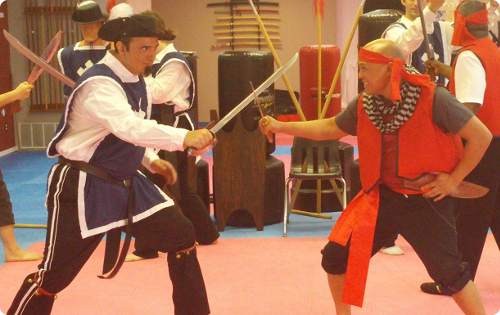Garimot buno covers both standing and ground fighting, including strikes, throws, pins, locks, and escapes. Animal characteristics are emulated, but the two primary animals are the tiger and monkey, which represent the dichotomies of aggressive/passive, direct/evasive, hard/soft, etc. This style contains elements of native Filipino wrestling from the Aetas and Mangyans, and the close-range locks and controls of arnis.


